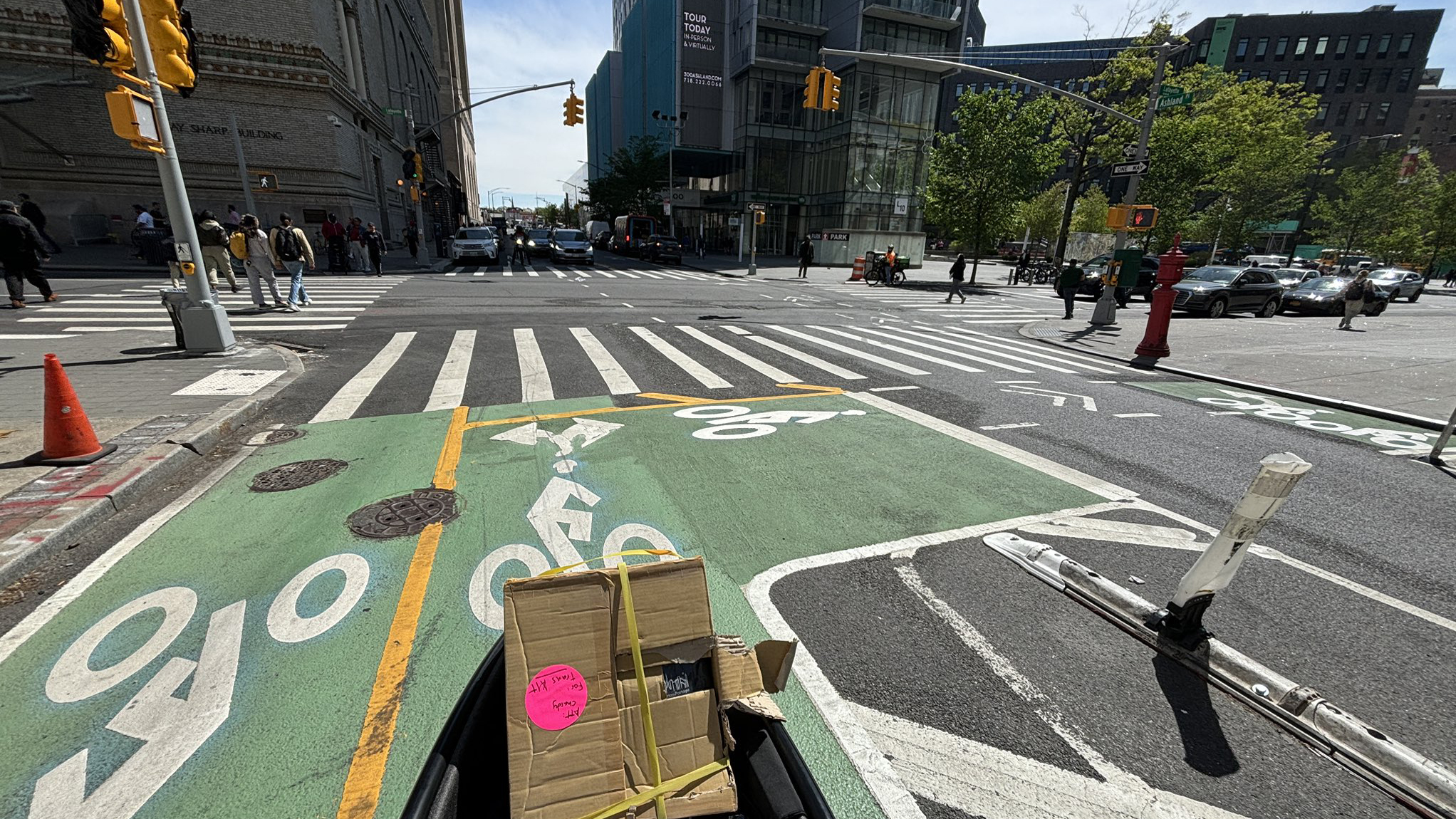Interest continues to grow in the Department of Transportation's slow speed zones, which place 20 mph speed limits on residential streets. One month after the application deadline for the program, community boards across the city continue to pass resolutions in support of slow zones.
In February, Streetsblog wrote about applications or expressions of interest from Mt. Eden and Wakefield in the Bronx, Rego Park in Queens, Manhattan's Upper West Side, and Brownsville, Fort Greene, Prospect Heights and Park Slope in Brooklyn. Those appear to be only a fraction of the neighborhoods seeking safer, slower traffic. While DOT has not officially said how many applications have been submitted, an agency representative told attendees at a Brooklyn Community Board 7 this week that the department had received over 100 from across the city.
Last week, the transportation committee of Brooklyn Community Board 1 endorsed plans for a slow zone in Greenpoint. The zone, which is sponsored by the Greenpoint Renaissance Enterprise Corporation, had strong local support even before the community board weighed in. Letters of support have already come from Senator Martin Dilan, Assembly Members Joseph Lentol and Vito Lopez, and Council Members Diana Reyna and Steve Levin, as well as a slew of local civic associations.
Eric Brazaitis, who has led the push for the zone, said that the area's location in between three truck routes makes it ideal for a slow zone. "We get a lot of shortcutters," he said. "The police can't be there 24/7 to write tickets on them." Slow zones not only lower the speed limit, but install traffic calming infrastructure that help to make the lower speed limit self-enforcing.
The application, submitted before the deadline, covers an area roughly between Graham Avenue, Morgan Avenue, Metropolitan Avenue and the BQE. "This is a perfect candidate area," said CB 1 transportation committee chair Karen Nieves. "We have parks, we have schools, we have churches."
This Tuesday, the full board of Manhattan CB 12 voted to support an application submitted for the Inwood neighborhood. “It's a lovely spot, but the roads are hilly and narrow and tempting to speeders and toll-dodgers,” applicant Dave Thom told DNAinfo. "A comprehensive neighborhood-wide program like this to reduce speed and deter traffic might be the answer residents have been looking for."
The Inwood proposal would cover the area west of Broadway between Isham and W. 218th Streets. It too, has strong community support, according to DNAinfo, including letters from Columbia University, Senator Adriano Espaillat, Assembly Member Denny Farrell and Guillermo Linares, and local schools and businesses.
Even in areas that aren't actively seeking a slow zone, interest in the idea is high. In Brooklyn CB 7, only one neighborhood applied for a 20 mph zone, Windsor Terrace. The board, however, invited DOT to present information about the treatment to the whole transportation committee last Tuesday. CB 7 hasn't taken a position on the Windsor Terrace application at this point, said District Manager Jeremy Laufer, but already some residents are wondering whether it might be best to bring slow speeds to the entire area, which also includes Sunset Park and South Park Slope, rather than just one section. "Maybe this should be uniform for the community," Laufer said.
Another slow zone application we missed last month came from Brooklyn's Boerum Hill, as reported in the Brooklyn Ink. Staten Island Borough President James Molinaro asked his borough's three community boards to identify slow zone locations in November, an effort supported by Council Member James Oddo.
DOT wouldn't discuss the number of applications the agency has received, but according to Laufer, it appears as though so many have been submitted that only a small fraction can be installed in the first round of work.
If you've heard of other slow zone proposals, let us know.





